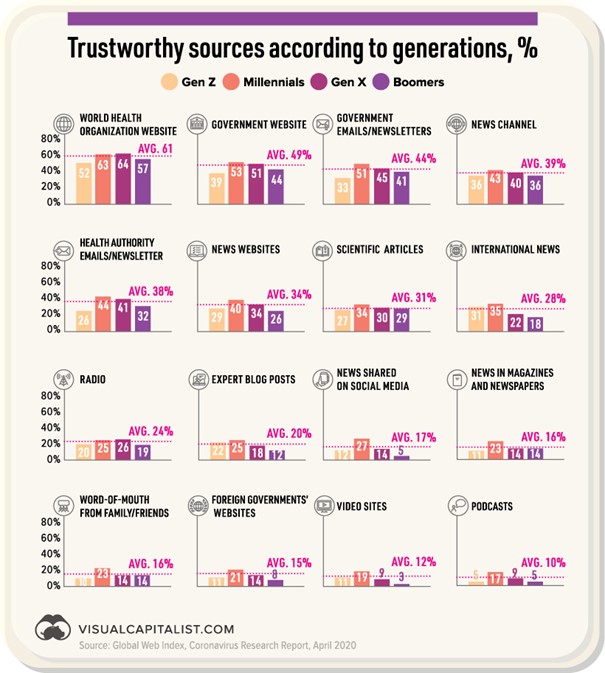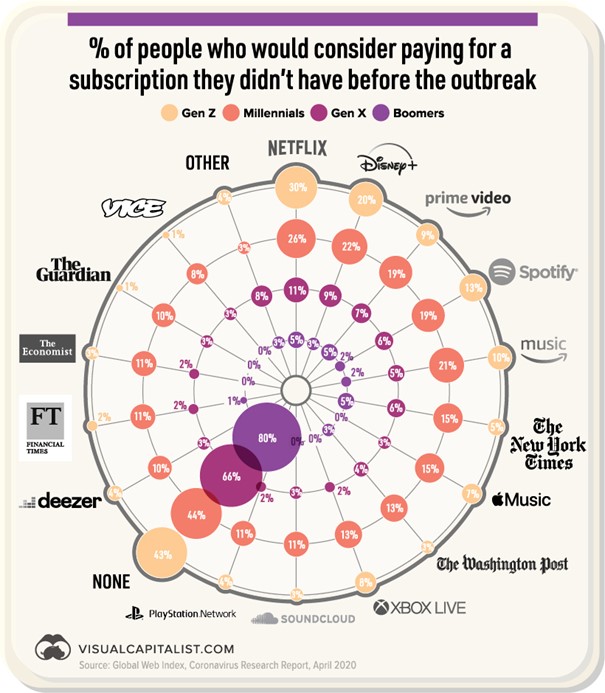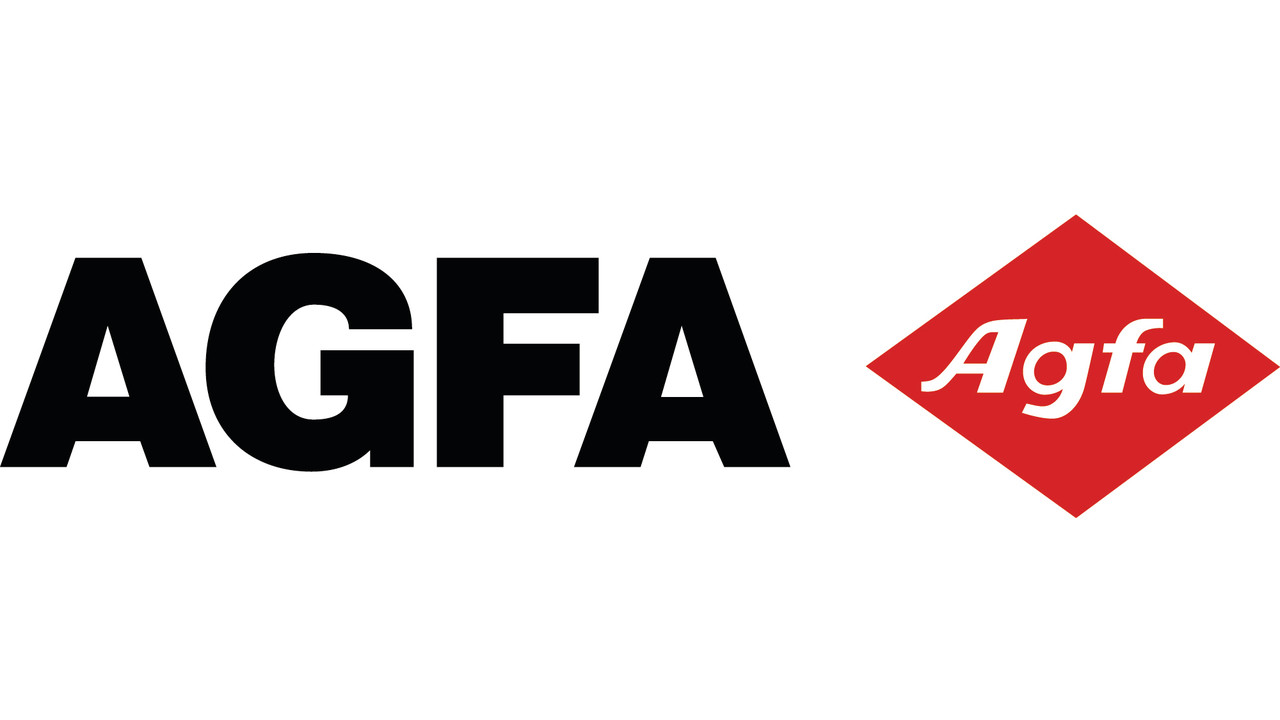Cette infographie de Visual Capitalist a été conçue en avril 2020, alors que la crise sanitaire n’avait que quelques mois et que la plupart des pays expérimentaient leur premier confinement. Elle compare les types de médias vers lesquels se sont tournés les 4 000 Américains et Britanniques, âgés de 16 à 64 ans, interrogés par le cabinet d’études de marché Global Web Index, en fonction de la génération à laquelle ils appartiennent.
Les boomers, les personnes âgées de plus de 55 ans dans cette enquête, sont ceux qui semblent avoir le moins changé leurs habitudes depuis le début de la pandémie, avec essentiellement une hausse de leur consommation de télévision. Les représentants de la génération X, de leur côté, ont augmenté leur consommation de programmes télévisés plus que toute autre génération, mais ils les regardent également sur Internet.
Les personnes âgées de 25 à 39 ans – les milléniaux – ont commencé ou accru leur consommation de médias dans plusieurs catégories, notamment les vidéos en ligne, la télévision sur Internet et la télévision classique. Enfin, plus de la moitié des représentants de la génération Z, les plus jeunes, consomment nettement plus de vidéos en ligne depuis la pandémie
Media Consumption in the Age of COVID-19
As the coronavirus outbreak continues to wreak havoc across the globe, people’s time that would have otherwise been spent perusing malls or going to live events, is now being spent on the sofa.
During this period of pandemic-induced social isolation, it’s no surprise that people are consuming vast amounts of media. Today’s graphics use data from a Global Web Index report to explore how people have increased their media consumption as a result of the outbreak, and how it differs across each generation.
More Time to Kill
Global Web Index found that over 80% of consumers in the U.S. and UK say they consume more content since the outbreak, with broadcast TV and online videos (YouTube, TikTok) being the primary mediums across all generations and genders.
Unsurprisingly, 68% of consumers are seeking out pandemic updates online over any other activity. Gen Zers however, have other plans, as they are the only generation more likely to be listening to music than searching for news.

Overall, younger generations are more likely to entertain themselves by playing games on their mobile or computer. Millennials also stand out as the foodie generation, as they are the most likely to be searching for cooking recipes or reading up on healthy eating.
Leaning on a Pillar of Trust
Across the board, consumers view the World Health Organization (WHO) as the most trusted source of information for any COVID-19 related updates.
This isn’t true everywhere on a regional basis, however. For example, while U.S. consumers trust WHO the most, UK consumers view their government as their most trusted news source overall.

Trust in information shared on social media is higher than word of mouth from friends and family, and even foreign government websites. That said, it is lower than information shared on the radio or news websites.
The Need for Pandemic Positivity
While staying abreast of pandemic updates is important, ultimately, a positive mindset and the ability to switch off will help people cope better day-to-day.
Therefore, it seems reasonable that people are more inclined to invest in new subscription services since they have been in isolation, with almost one-third of Gen Zers considering purchasing Netflix, followed by Disney+.

Understandably, people are becoming increasingly worried about how much time they are dedicating to their screens. However, research suggests that screen time itself is no cause for concern. Rather, it’s the content we choose to consume that could have a significant impact our psychological well-being.
Perhaps most intriguingly, the TV shows and movies that are increasing in popularity on Netflix are about pandemics—which could signify the need for people to fictionalize the chaos we find ourselves in.
Regardless of what type of content we are consuming, the fact is that every generation is relying on their devices during this pandemic to inform and distract more than ever before, creating a huge opportunity for media companies to engage a captive audience.











































